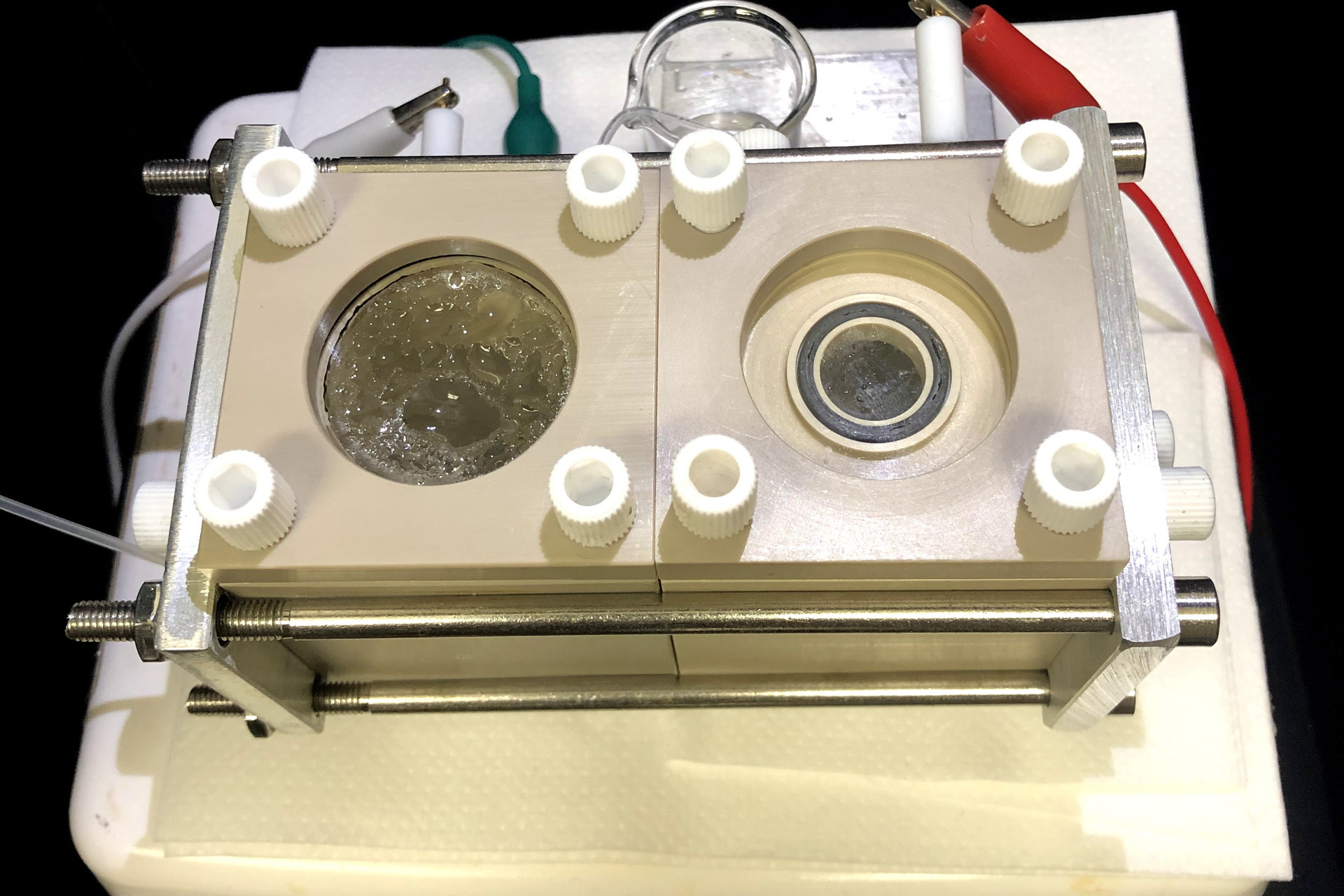A group of researchers from the United States introduced a device based on nanomaterials and bacteria that, like plants, converts sunlight, carbon dioxide and water into organic compounds and oxygen. Scientists are sure that this technology will be useful for the colonization of other planets, primarily Mars. New data published in the journal Joule.
When mankind reaches the establishment of colonies outside the Earth, settlers will need a huge amount of products based on organic compounds - from fuel to medicines. It will be too expensive to deliver all the necessary materials from our planet, so setting up production on site will be relevant, the researchers are sure.
- Sporomusa ovata bacteria live in a “forest” of nanowires
- © UC Berkeley photo by Peidong Yang
To solve this problem, over the past eight years, a team of scientists from the University of California at Berkeley and the Lawrence Berkeley National Laboratory have worked to create a hybrid system of Sporomusa ovata bacteria and nanomaterial - silicon wire, which is one hundred times thinner than a human hair. Such a device absorbs the energy of sunlight and turns atmospheric CO2 and water into organic molecules and oxygen, experts say.
“The atmosphere of Mars is about 96% carbon dioxide. In fact, it only requires silicon semiconductor nanowires to receive solar energy and transfer it to these bacteria so that they do all the chemical work for you, ”said Peydong Yang, project manager at the University of California, Chemical Department.
“When preparing space flights, special attention is paid to the weight of the payload, and the advantage of biological systems is that they reproduce themselves, that is, they do not need to be sent in large quantities. That is why our bio-hybrid project is very interesting, ”the specialist added.
Scientists also expressed confidence that the developed device will find application on Earth. Its ability to absorb carbon dioxide and produce oxygen may be useful in solving the problem of increased concentration of carbon dioxide in the atmosphere.
The invention is a dense "forest" of nanowires in which beneficial microorganisms live. Moreover, a group of researchers managed to achieve high efficiency: 3.6% of the solar energy supplied to the device is converted and bound into carbon compounds in the form of acetate - acetic acid.
- A device for capturing carbon dioxide from air and converting it into useful organic products. On the left is a chamber containing a hybrid of nanowires and bacteria. On the right is the chamber where oxygen is produced
- © UC Berkeley photo by Peidong Yang
The resulting substance can serve as a building material for a number of organic compounds: from fuel and plastics to medicines. The chemical transformation of substances in the device is based on the process of photosynthesis.
In an experiment conducted by scientists, nanomaterials were used only as wires, not solar panels. Energy was supplied to the device from the outside. In a real system, as conceived by scientists, the wire itself will absorb light and transmit electrons to bacteria.
“These silicon wires are inherently similar to an antenna: they capture solar photons in the same way as a solar panel,” said Professor Peydun Yang.
Scientists note that other genetically modified bacteria or yeast can convert the acetate produced by Sporomusa ovata into a whole range of organic products.

